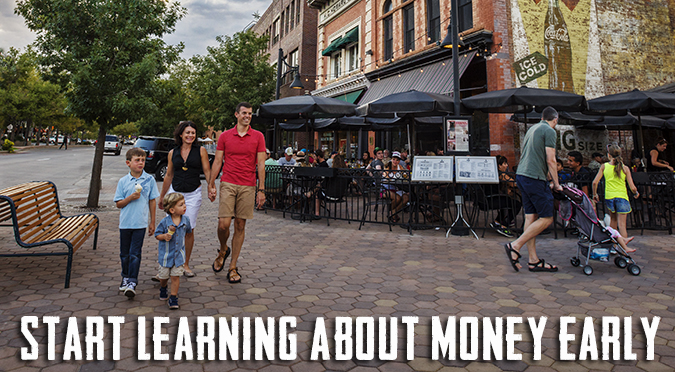Chautauqua is as iconic a Boulder monument to some as the Flatirons it sits below. Learn all about Boulder’s Chautauqua in our latest collaboration with the Museum of Boulder.
The Word “Chautauqua”
Chautauqua, like all of Boulder and Colorado, was once indigenous land. The tribes that traditionally occupied Boulder are Cheyenne, Ute and Arapaho. The word, Chautauqua, comes from the Iroquois tribe. It has two different meanings, either “a bag tied together” or “two moccasins tied together.” Both definitions aptly describe the shape of Chautauqua Lake in western New York, where the name Chautauqua was first used.
The Chautauqua Movement
With origins tracing back to the 1870s, the Chautauqua movement takes its name from the New York lake where the action began. Chautauqua was an adult education and social movement that brought entertainment and culture to rural communities. The movement’s speakers and performers were teachers, musicians, showmen, preachers and more. The first Chautauqua officially took place in 1874. From then, it rapidly began to expand across the US. The Chautauqua movement came to Boulder in 1898.

Photo courtesy of the Carnegie Library for Local History / Museum of Boulder Collection
The primary purpose of the Chautauqua movement was to emphasize the importance of learning throughout life. Talks were targeted to adults and often held in rural locations. This helped bring educational experiences to people and places who would not have continued their education without Chautauquas.
Chautauquas came to play a part in the American political landscape, as well. Multiple presidents, including John F. Kennedy and Teddy Roosevelt, spoke at the New York Chautauqua. Teddy Roosevelt even called Chautauquas, “The most American thing about America.”
The Boulder Chautauqua
The City of Boulder had run power and electricity to Chautauqua before opening day, which took place on July 4, 1898. Inaugural speaker and Kentucky native Colonel Henry Watterson spoke about the Spanish American War. Over 4,000 people were in attendance for opening day, including Colorado Governor Alva Adams. In 1898, 4,000 people made up around two-thirds of the population of Boulder.
People also came from out of town to attend opening day, which contributed to the high number of attendees. Most people could not fit inside the auditorium but could still hear and see what was happening inside. The most popular speaker of Chautauqua’s first summer was Reverend T. DeWitt. His speech garnered an audience of around 8,000.
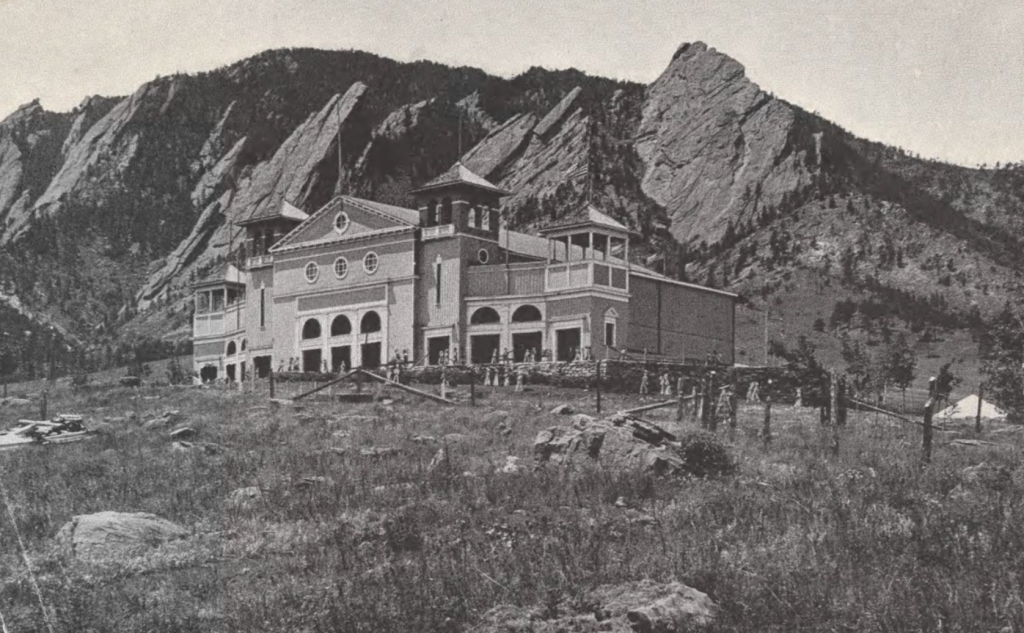
Photo courtesy of the Carnegie Library for Local History / Museum of Boulder Collection
The first decade of Chautauqua primarily featured speakers. In 1899, William Jennings Bryan was the most popular speaker, drawing a crowd double the size of Boulder’s population. People came from all over northern Colorado to hear him speak. Bryan, a State Representative from Nebraska, was touring Chautauquas in 1899 to try to keep his political platform relevant. He had lost the presidential election to William McKinley in 1896 but remained popular, especially in mining communities.
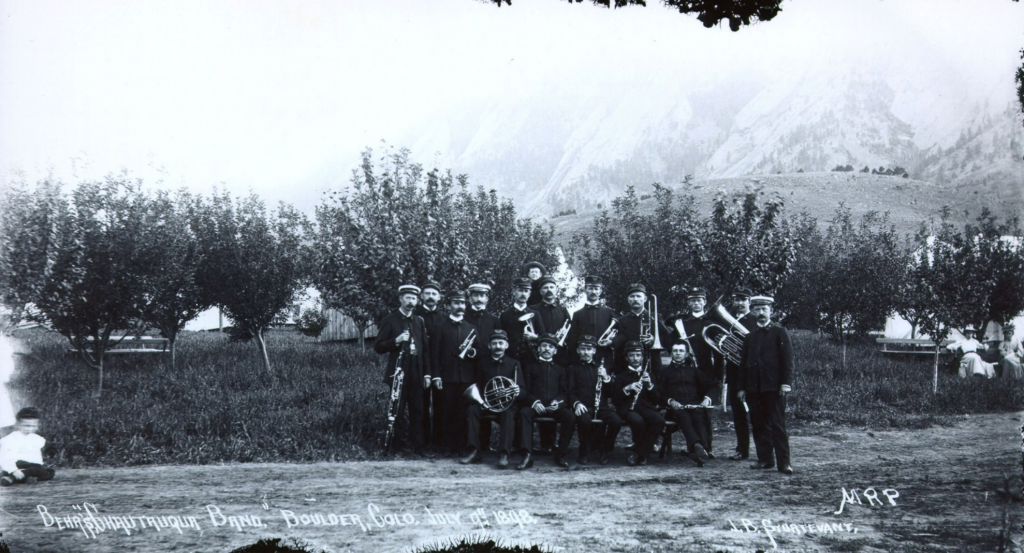
Photo courtesy of the Carnegie Library for Local History / Museum of Boulder Collection
Though primarily focused on speeches, the Boulder Chautauqua also featured other entertainment. Musicians and magicians performed at Chautauqua, and films were screened in the auditorium. In the early years, the films were often about the Spanish Civil War. Thomas Edison formed the video company that showed the films.
The End of the Chautauqua Movement
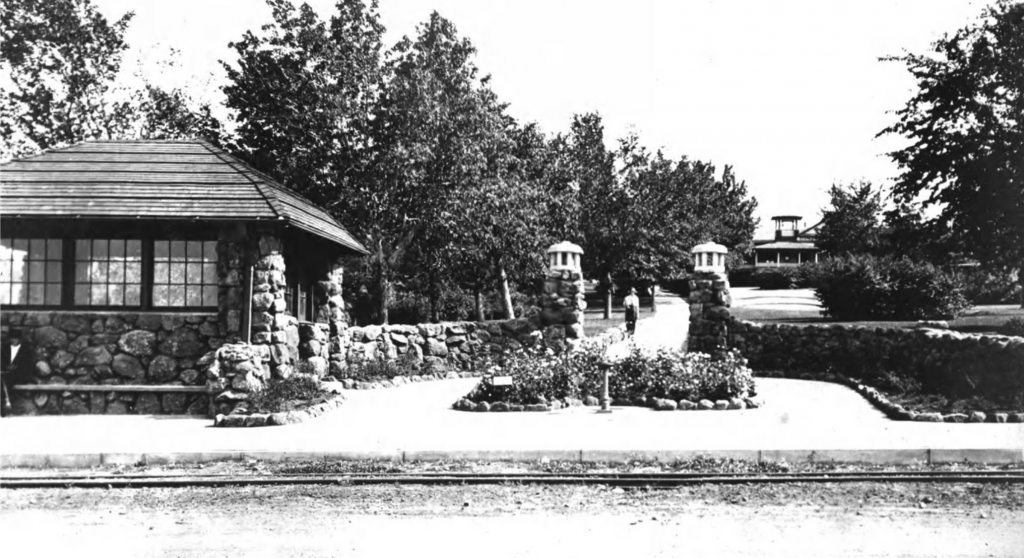
Photo courtesy of the Carnegie Library for Local History / Museum of Boulder Collection
As time went on and new forms of entertainment like radio and TV became more mainstream, Chautauquas lost popularity. The Great Depression was also a contributing factor to the decline of the Chautauqua movement. Rural farmers, who made up a large portion of Chautauqua audiences, were hit hardest by the Great Depression. As a result, those people began attending fewer Chautauquas. Eventually, the Boulder Chautauqua was one of only three left in the country.
Post-Movement Chautauqua
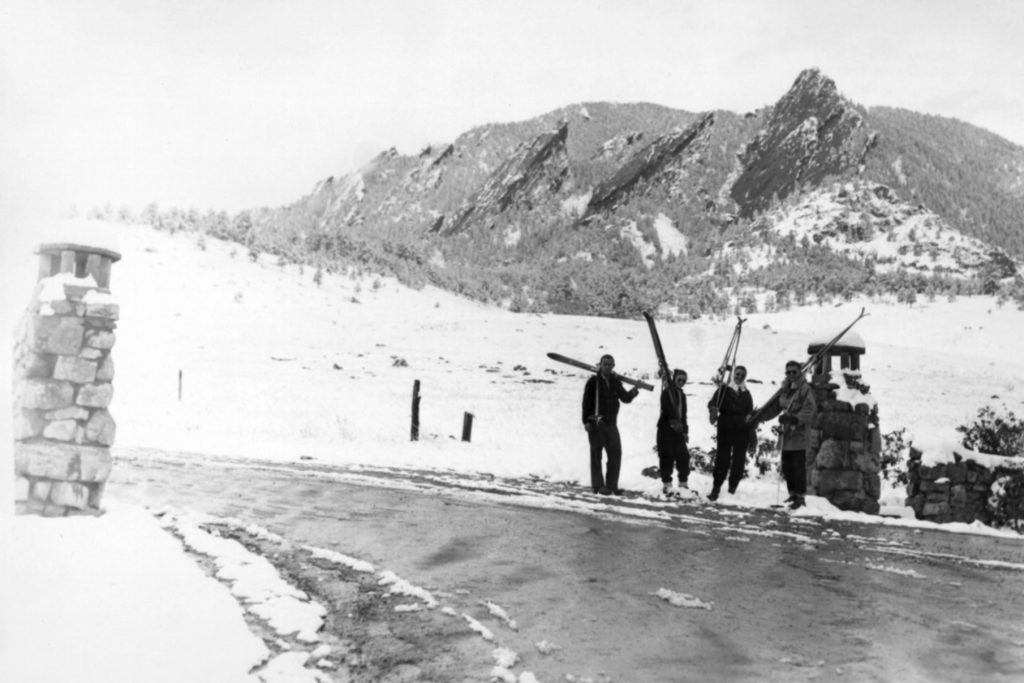
Photo courtesy of the Carnegie Library for Local History / Museum of Boulder Collection
From 1949 to 1963, though not continuously, Boulder’s Chautauqua served as the Mesa Ski Area. That area is now part of the aptly named Mesa Ski Jump Trail. The final year of operation for the Mesa Ski Area was in 1963 due to a lack of quality snow and some unfortunate vandalism.
On May 27, 1974, a car bomb targeting CU students who were part of the Chicano Movement in Colorado went off near the Chautauqua Auditorium. The bomb exploded, killing CU alumni Reyes Martinez and Una Jaakola, and CU Boulder student Neva Romero. The explosion was so powerful that it shook houses and buildings for miles around. The victims are now remembered as Los Seis de Boulder, which honors them and three other activists lost to another Boulder car bombing. There is a memorial marker located at Chautauqua in their memory.
Chautauqua Today

The Chautauqua Auditorium is now used for event rentals. In the summer, Chautauqua hosts a summer concert series on the grass, but Chautauqua’s main draw today is hiking. Chautauqua has several trails that begin near the auditorium, including the well-known Royal Arch Trail. Chautauqua and the 40 acres of land surrounding it became a National Historic Landmark in 2006. It has over half a million visitors each year.
To find out more about Boulder’s rich history, plan your visit to the Museum of Boulder today!

